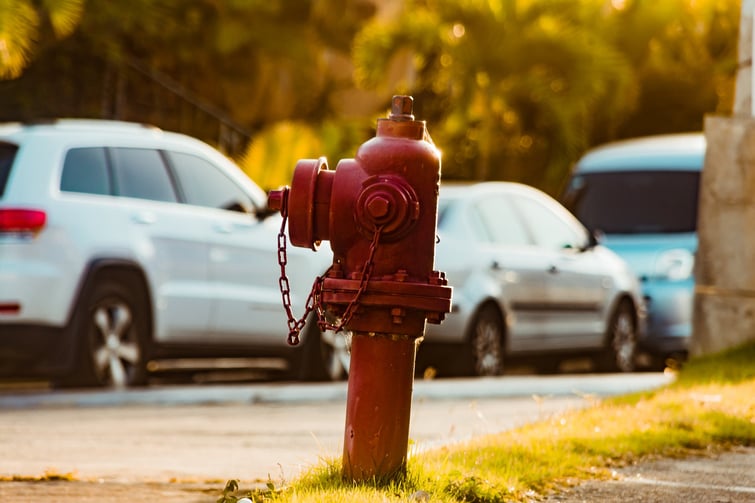
The terrible fires raging at present in California stress the importance of having a standpipe system in good condition and fire hydrants in good working order for putting out fires just as quickly as possible and preventing them from spreading immediately.
Whenever a fire breaks out, it is vital to react as quickly as possible for protecting any possible victims who may be trapped and any homes in the vicinity, as well as the firemen themselves. It is essential for firefighters to be well-organized, efficient and, therefore, to have a fire hydrant nearby that is in good working order.
Today fire-engines are equipped with tanks (between 2 and 13 thousand liters of water), but when we remember that a fire hose can supply almost 1,000 liters per minute, reserves are rapidly exhausted. This is what makes fire hydrants vital, as they supply most of the water needed for getting major fires under control. Most countries have regulations and procedures for ensuring that fire hydrants are kept in good running order. In the Unites States, for example, American Flow control strongly recommends following the maintenance procedures described in the AWWAM17 manual for ensuring that they are in perfect condition. Amongst other things, these procedures require for hydrants to be inspected every six months.
How can good maintenance be guaranteed?
Twice-yearly inspection is compulsory for ensuring that valves operate correctly. It is carried out in several steps:
> Open the valve completely and let the water run for several minutes to make sure that it flows correctly.
> Close and re-open the valve several times to make sure that the handwheel does not stick. Check that there are no leaks anywhere in the vicinity.
> Lubricate the thread on the nozzle cap with food grade grease.
> Check that when the valve is closed, all the water remaining in the hydrant drains out quickly. If this is not the case, it may mean that the hydrant’s drain openings are blocked.
> For unblocking the drain openings, fit the pump plug and tighten it until it is completely water-tight. Then open the hydrant valve by two or three turns so that the drain opening is partially open, and that water pressure can clear any debris that has collected in the hydrant. If this is not successful, the drain mechanism must be cleaned after removing the control rod beforehand.
> If the water still does not drain out satisfactorily despite all these efforts, the draining zone surrounding the base of the hydrant must be replaced.
After carrying out the above operations and making a visual, manual check, the inspector must decide whether any parts need to be cleaned, repaired or replaced.
What are the main problems liable to prevent a fire hydrant from operating correctly?
Any mechanical problem or debris in a fire hydrant may prevent it from closing or draining out satisfactorily and thereby damage the main valve. Debris may be comprised of dirt, gravel, leaves or other foreign bodies.
In the winter, fire hydrants encounter two major problems:
What is the cost associated with regular fire hydrant maintenance?
Everyone agrees that regular preventive maintenance of fire hydrants is both critical and essential. Even so, the fact remains that carrying out maintenance and essential controls is often a real headache for the departments concerned. It takes time and means that considerable human resources must be mobilized, which consequently give rise to significant costs. Moreover, it is a repetitive, boring job, whose results cannot be assessed immediately. For this reason, there is a risk that these operations are not carried out correctly.
Whenever they are carried out carefully, operations may give rise to health problems for operators, who have to spend a lot of time carrying out repetitive jobs opening and closing valves and, as such, run risks of suffering from occupational injuries.

+ 33 (0) 4 75 40 27 15
sales@modec.fr
ZI Sirius Quatre
80, allée René Higonnet
26760 Beaumont-lès-Valence, FRANCE
185 Alewife Brook Parkway
#210
Cambridge, MA 02138, USA
11111 Katy Freeway suite
#910
Houston, TX 77079, USA
© Alle Rechte vorbehalten - modec - Verwirklichung : ARKOD